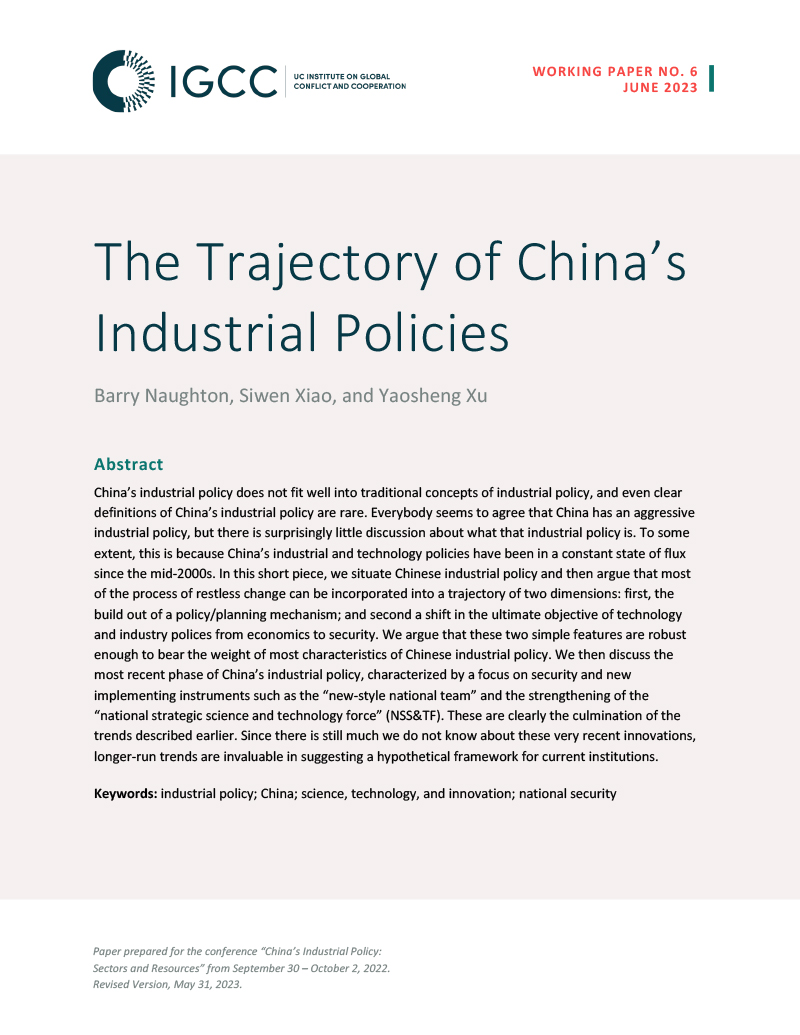The Trajectory of China’s Industrial Policies

In this working paper, Barry Naughton, Siwen Xiao, and Yaosheng Xu argue that most of the changes in Chinese industrial policy since the mid-2000s can be thought of as being part of a trajectory that seeks to build a policy/planning mechanism, and that shifts the ultimate objective of technology and industry policies from economics to security.
DownloadChina’s industrial policy does not fit well into traditional concepts of industrial policy, and even clear definitions of China’s industrial policy are rare. Everybody seems to agree that China has an aggressive industrial policy, but there is surprisingly little discussion about what that industrial policy is. To some extent, this is because China’s industrial and technology policies have been in a constant state of flux since the mid-2000s. In this working paper, Barry Naughton, Siwen Xiao, and Yaosheng Xu situate Chinese industrial policy and then argue that most of the process of restless change can be incorporated into a trajectory of two dimensions: first, the build out of a policy/planning mechanism; and second a shift in the ultimate objective of technology and industry policies from economics to security. We argue that these two simple features are robust enough to bear the weight of most characteristics of Chinese industrial policy. We then discuss the most recent phase of China’s industrial policy, characterized by a focus on security and new implementing instruments such as the “new-style national team” and the strengthening of the “national strategic science and technology force” (NSS&TF). These are clearly the culmination of the trends described earlier. Since there is still much we do not know about these very recent innovations, longer-run trends are invaluable in suggesting a hypothetical framework for current institutions.
This working paper is part of an IGCC series on China’s science, technology, innovation, and industrial policies. This work was made possible through support from the U.S. Department of State’s Bureau of Intelligence and Research.
Thumbnail credit: Asian Development Bank